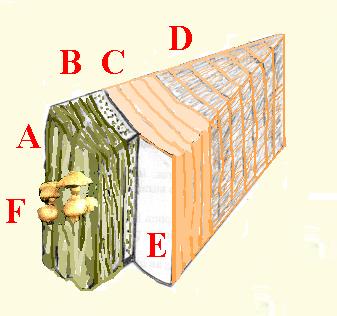Honey fungus
Armillaria mellea
This fungus lives as a parasite on living and dead
wood. They infect a tree through its roots , and go
up with the fluid stream through the bark of the
tree. The fungus grows through the bark and
forms the honey-colored mushrooms.
Reproduction
The Honey Fungus produces spores that, blown by the
wind, will spread over a large area. Here the fungus
lives as an saphrofyte, a fungus that lives from dead
leaves and dead wood until it finds the roots of
another tree. But the Honey fungus also forms
rhizomorphs, root-like structures that radiate from
the tree through the forest soil and infect all
nearby trees and plats. But they are not easy to
be found.
control of the Honey fungus
The Honey fungus can only be controlled by removing
all infected wood, dead and alive, including the tree
stumps. The soil must be cleaned from the rhizomorps
Reforesting can be done by using birch , larch and
Ponderosa pine as they are not vulnerable for the
rhizomorphs.

Infection of a tree by the Honey fungus:
A: the dead bark.
B: Phloem or living part of the bark.
C: live wood or sawood.
D: dead wood or heartwood.
E: a sheet of white, strong smelling fungus sheet.
This sheet glows in the dark.
F: the fungus mushroom, on the outerside of the bark.
producing light
A strange and not well understood Honey fungus phenomene
is the production of white light, that can be seen in a
dark night: the mycellium gives light but the reason for
this is not understood.
|
|